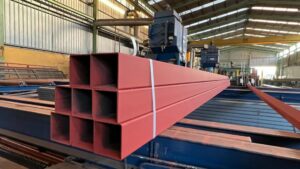Italy’s budget battle with the EU, a potential no-deal Brexit, and trade tensions stifling economic growth are the main threats to steel demand growth in Europe. So says Gonzalo Delgado, ArcelorMittal Flat Steel Europe chief marketing officer MENA & Turkey.
Despite slowing growth forecast for 2019, EU steel use is still at an encouraging level compared to recent years, Delgado said at this week’s Kallanish Euro-Turkey Flat Steel Seminar in Istanbul. The EU’s purchasing managers’ index (PMI), meanwhile, which correlates strongly with steel demand, weakened in recent months but is still above the long-term average.
Major steel using sectors are all in the expansion stage of the business cycle, but with lower growth expectations than last year, the official continued. Only the automotive sector is going through an exceptional situation, resulting in slow growth, with carmakers investing into cleaner engines to meet new EU regulations. But this should return to normal from the first quarter of 2019. “Steel demand is returning to a slower but more sustainable growth pattern,” Delgado observed.
EU steel imports, meanwhile, are stable at around 1.2 million-1.5 million tonnes/month. However, the origins are changing. Reduced intake from China was initially replaced by increased imports from India in 2017 and now Turkey in 2018. The latter has a 17% share in EU flat steel imports versus 13% in 2017 and 7% in 2016.
The EU’s safeguard measures are just a temporary measure designed to prevent a potential surplus of material entering the bloc, Delgado commented. They are not aimed specifically at Turkey or any other country, and have so far not limited EU imports, he added.
ArcelorMittal is due to take control of Ilva from 1 November. “Why Ilva? It’s really a big fish,” Delgado explained. The mill will represent over 25% of ArcelorMittal Europe’s production. Italy is Europe’s second-largest steel consumer and yet ArcelorMittal has until now not had crude steelmaking facilities there. The mill has a range of modern production lines, including for hot rolled coil, plate, cold rolled coil, hot-dip galvanized coil, tinplate and pipe.
ArcelorMittal plans to initially run Ilva at a 6 million tonnes/year output rate, followed by 8.5m t/y in 2020 and 9.5m t/y in 2023.
Kallanish





